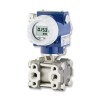All welded stainless steel hygienic pressure transmitters for use in food processing, brewing, distilling, medical products, semiconductor manufacturing processes and other sterile industrial environments.
Choose a hygienic pressure transmitter with 4-20mA current loop output, and a food grade oil filled diaphragm seal, for monitoring hydrostatic pressures to determine level, volume of tank contents or the pressure of gases generated by a process.
A hygienic pressure sensing device will have an open flush diaphragm with no hidden volumes or crevices so that the surfaces in contact with the process media can be easily cleaned and discourage the build up of contaminants such as bacterial or fungal growth.
Products
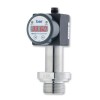 DS200P Sanitary Low Range Pressure Gauge, Switch and Sensor - All in one electronic switch, gauge and sensor designed specifically for use in the food, drink and biomedical industry for measuring process pressures.
DS200P Sanitary Low Range Pressure Gauge, Switch and Sensor - All in one electronic switch, gauge and sensor designed specifically for use in the food, drink and biomedical industry for measuring process pressures. DMP331P Hygienic Flush Pressure Transmitter - Sanitary pressure sensor wth exposed diaphragm with no crevices for high temperatures up to 300 Degrees Celsius in ranges from 100mb up to 40 bar gauge or absolute
DMP331P Hygienic Flush Pressure Transmitter - Sanitary pressure sensor wth exposed diaphragm with no crevices for high temperatures up to 300 Degrees Celsius in ranges from 100mb up to 40 bar gauge or absolute
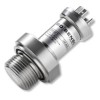 DMK331P Flush Diaphragm Pressure Sensor
DMK331P Flush Diaphragm Pressure Sensor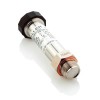 35X HTT High Temperature Compensated Pressure Sensor
35X HTT High Temperature Compensated Pressure Sensor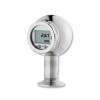 x|act i Rangeable Flush Pressure Transmitter with LCD Readout
x|act i Rangeable Flush Pressure Transmitter with LCD Readout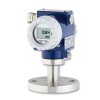 XMPi Process Plant Gauge and Absolute Pressure Transmitter
XMPi Process Plant Gauge and Absolute Pressure Transmitter
Applications
 Diaphragm sealed high temperature pressure transmitter for -1 to 25 kg/cm² - Diaphragm sealed pressure transmitter for measuring over -1 to 25 kg/cm² on liquid with a flush type diaphragm up to a temperature of 190°C.
Diaphragm sealed high temperature pressure transmitter for -1 to 25 kg/cm² - Diaphragm sealed pressure transmitter for measuring over -1 to 25 kg/cm² on liquid with a flush type diaphragm up to a temperature of 190°C.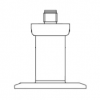 Food processing freshwater transfer pump 4 barg 4-20mA pressure sensor - A hygienic stainless steel flush diaphragm gauge pressure sensor for food processing pump transfer system to measure pressure of freshwater over a range of 0 to 4 bar g from the tri-clamp process connection, and sending the corresponding 4-20mA signal through the M12 connector electrical connection.
Food processing freshwater transfer pump 4 barg 4-20mA pressure sensor - A hygienic stainless steel flush diaphragm gauge pressure sensor for food processing pump transfer system to measure pressure of freshwater over a range of 0 to 4 bar g from the tri-clamp process connection, and sending the corresponding 4-20mA signal through the M12 connector electrical connection.
 100 inH2Og 4-20mA low concentration acid solution pressure sensor for CIP cleaning
100 inH2Og 4-20mA low concentration acid solution pressure sensor for CIP cleaning Hygienic atex approved 100mbar pressure transmitter for pharmaceutical application
Hygienic atex approved 100mbar pressure transmitter for pharmaceutical application Dairy compatible 90 kPa vacuum pressure transmitter
Dairy compatible 90 kPa vacuum pressure transmitter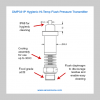 180°C UHT milk compatible pressure transmitter
180°C UHT milk compatible pressure transmitter


